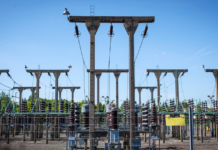The price of electricity in Pakistan is projected to rise by 25% over the next eight years, following a 50% increase in the past three years, according to a forecast by the Power Division. The average electricity tariff is expected to reach Rs29.70 per unit by 2034, up from the current rate of Rs24 per unit, according to a working paper shared with stakeholders last month.
The rise in tariffs in recent years has largely been attributed to the depreciation of the rupee, which has triggered inflation and led to higher power purchase rates. The average price of electricity has surged nearly 50%, from Rs16.77 per unit in FY2022 to Rs24.88 per unit in FY2025.
The increase in costs has been partly due to a significant rise in capacity charges, which jumped by 115%, from Rs971 billion to Rs2.1 trillion. Despite a slight reduction in energy payments, capacity costs have increased dramatically, adding to the overall increase in electricity tariffs.
The impact of currency depreciation has also been notable. The base tariff, largely unchanged between FY2023 and FY2025 in dollar terms, saw an effective increase of 44% due to exchange rate losses. As the value of the rupee fell, capacity charges rose by 66%, further driving up costs.
Fuel costs remained stable, as new, lower-cost generation capacities were introduced, but the power division stressed the importance of reducing reliance on foreign sources and focusing more on indigenous energy generation to ensure long-term sustainability.
The report also highlighted the effect of rising electricity prices on the industrial sector, with some industries facing higher costs that have made them uncompetitive, leading to a slowdown in demand.
Industrial power consumption has declined from 34 billion units in FY2022 to 28 billion units in FY2024, largely due to rising electricity prices and a shift toward off-grid generation.
Despite efforts to address inefficiencies, aggregate technical and commercial (ATC) losses have remained relatively unchanged, standing at 18.9% in FY2013 and 18.3% in FY2024.
The power division expects a slower tariff increase in the coming years, with rates projected to rise by 25% to 30% over the next decade, compared to more than 260% in the past decade.
However, a shift towards cleaner energy sources is expected to help mitigate some of the price pressures. By 2034, clean-fuel generation is expected to account for 66% of total generation, up from 46% in FY2025.
























